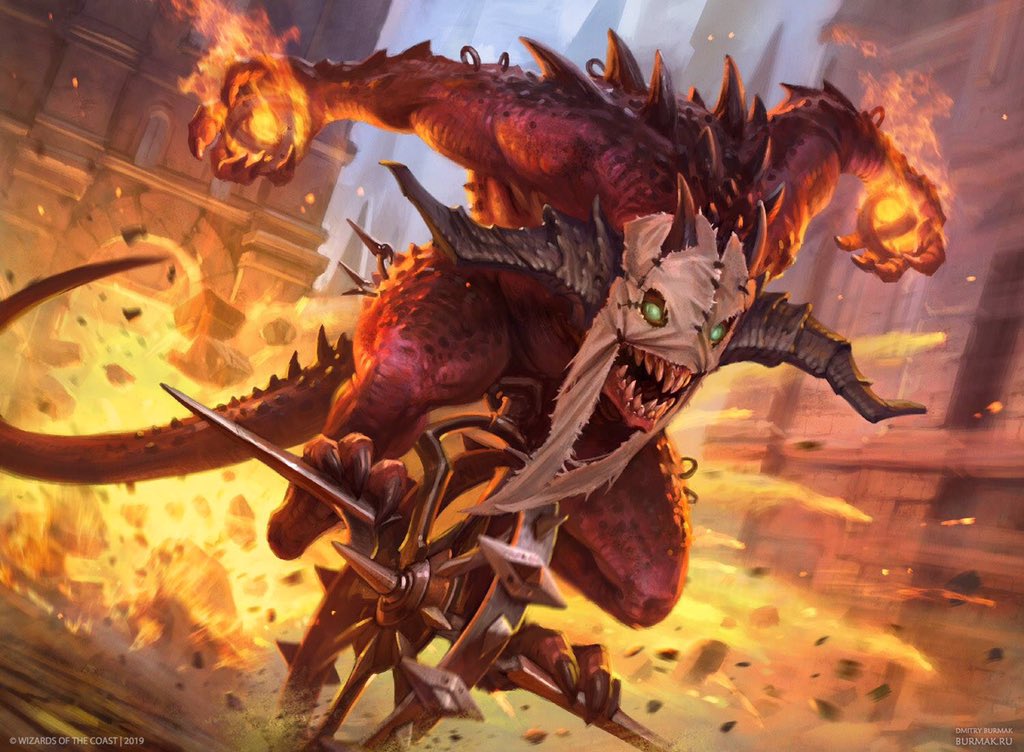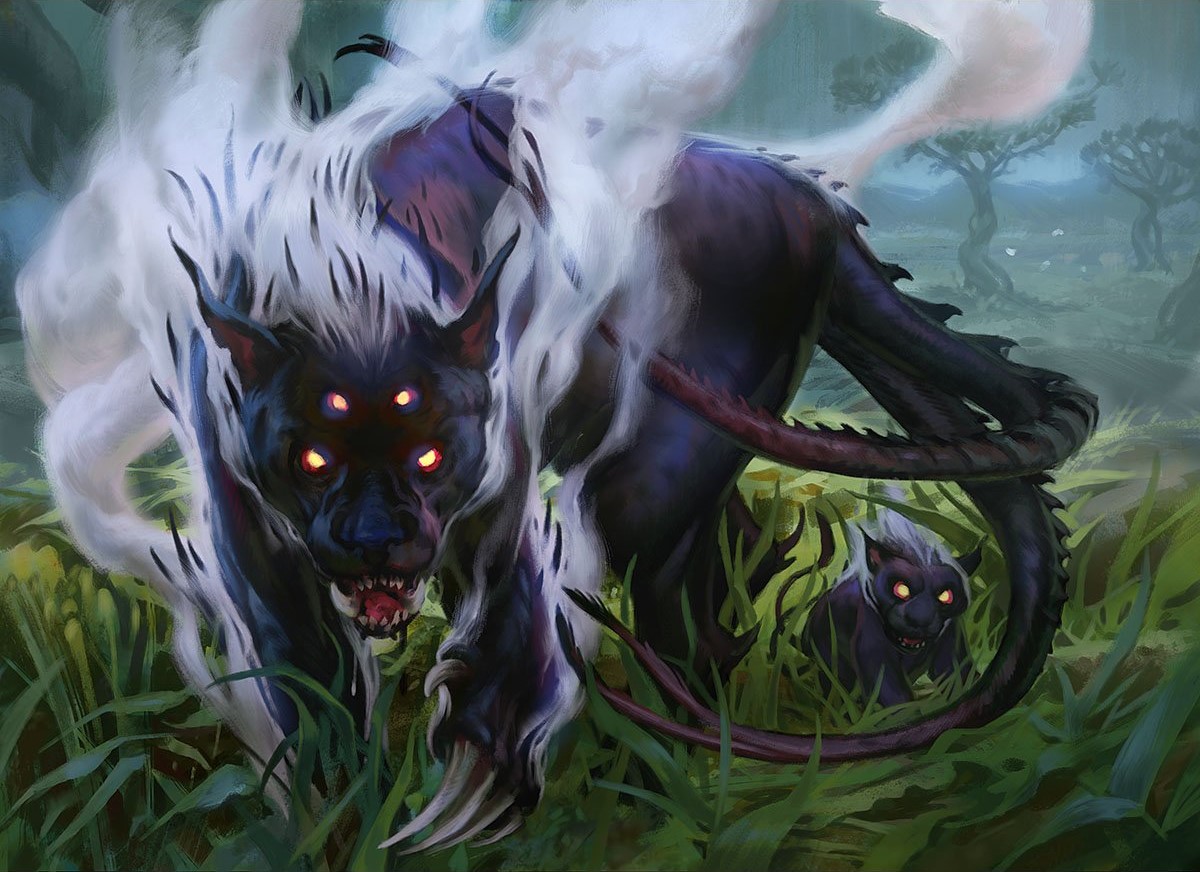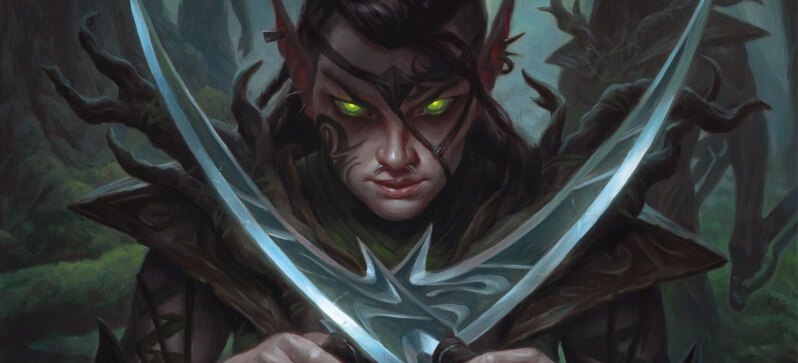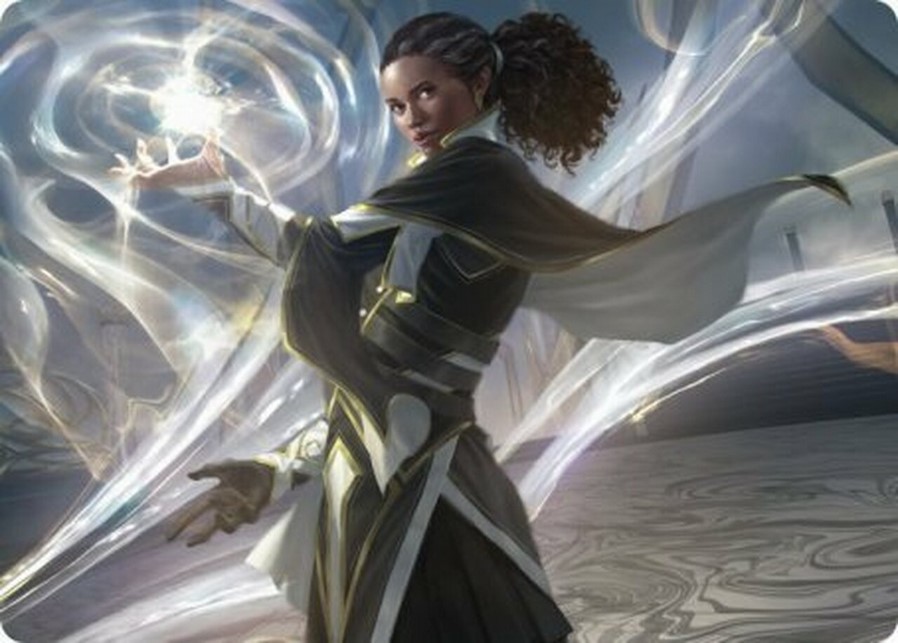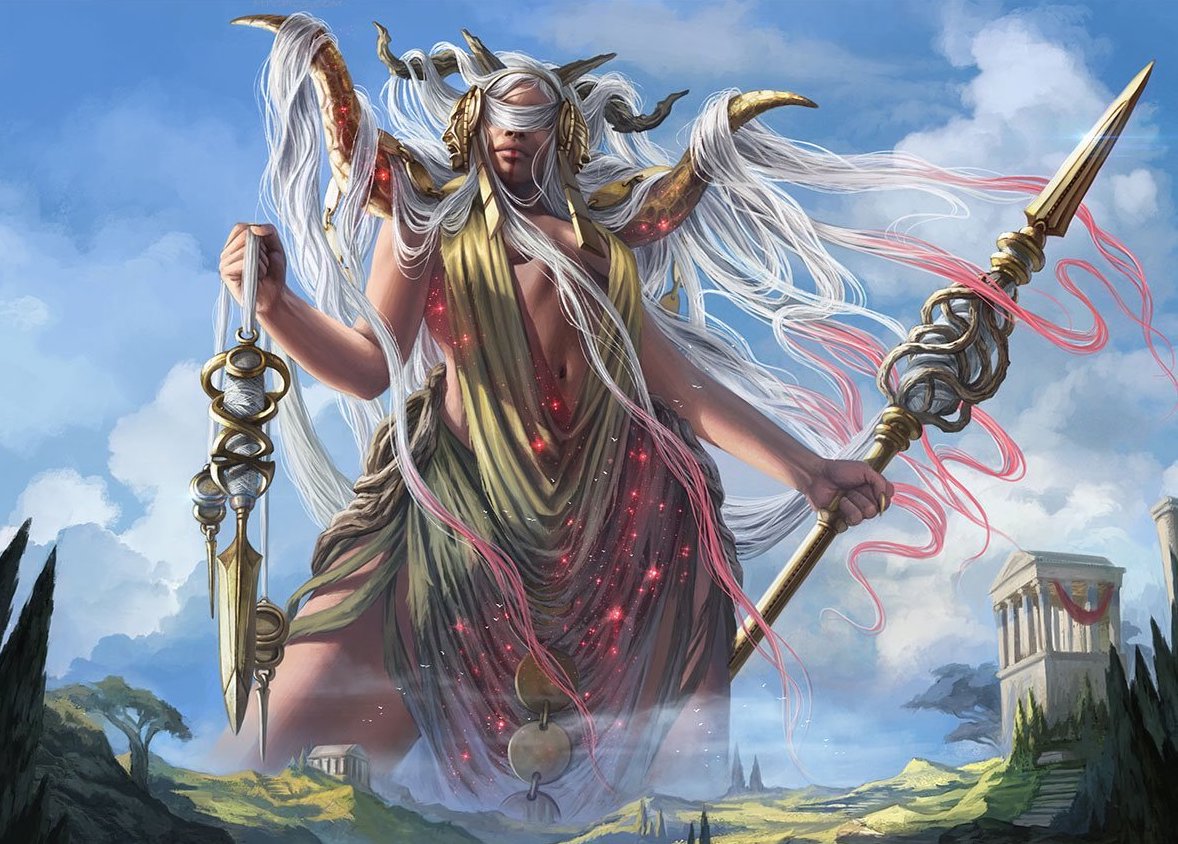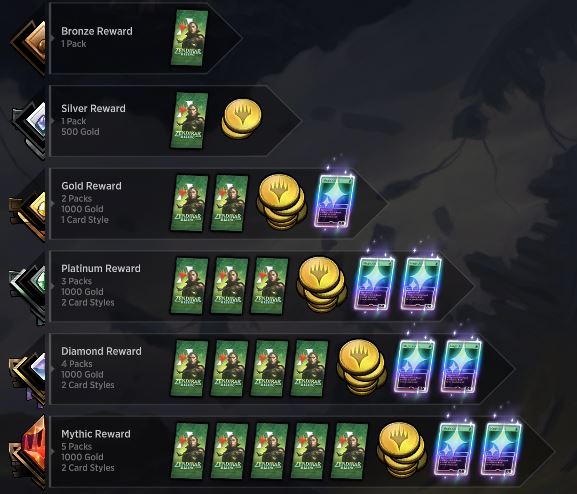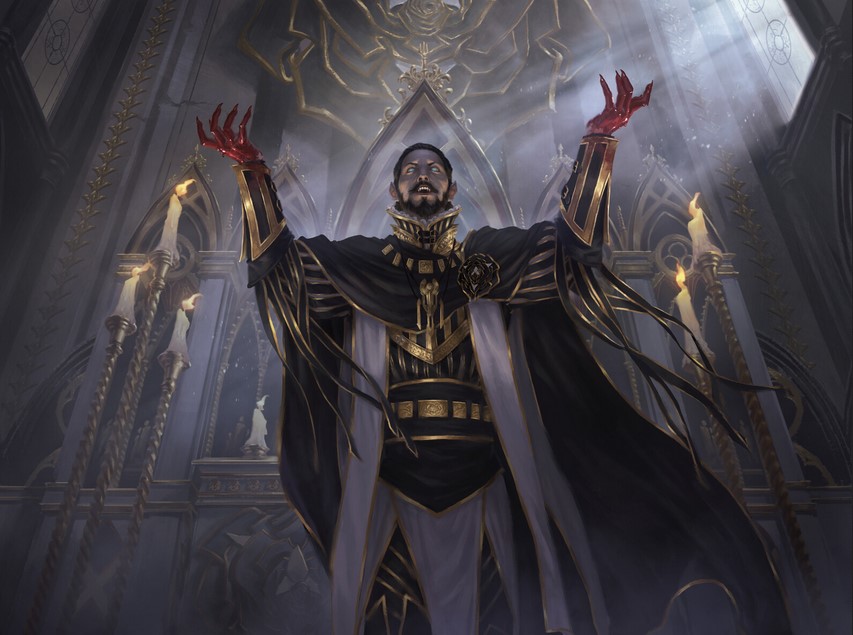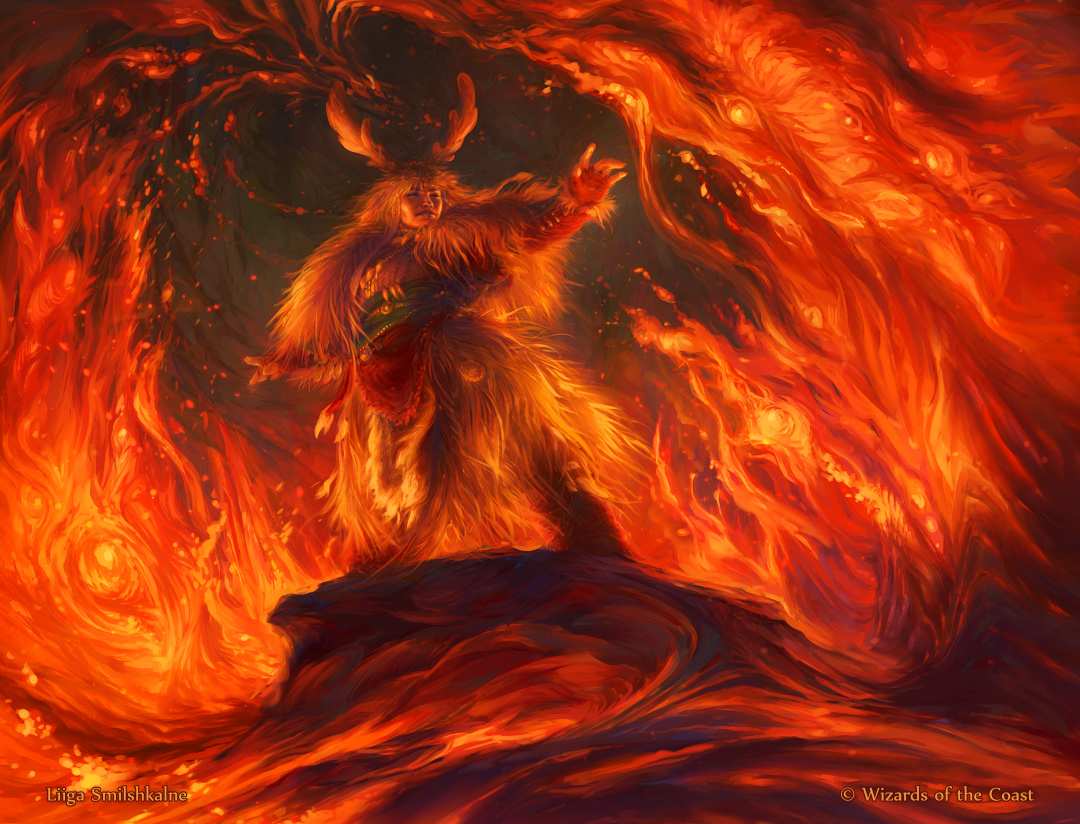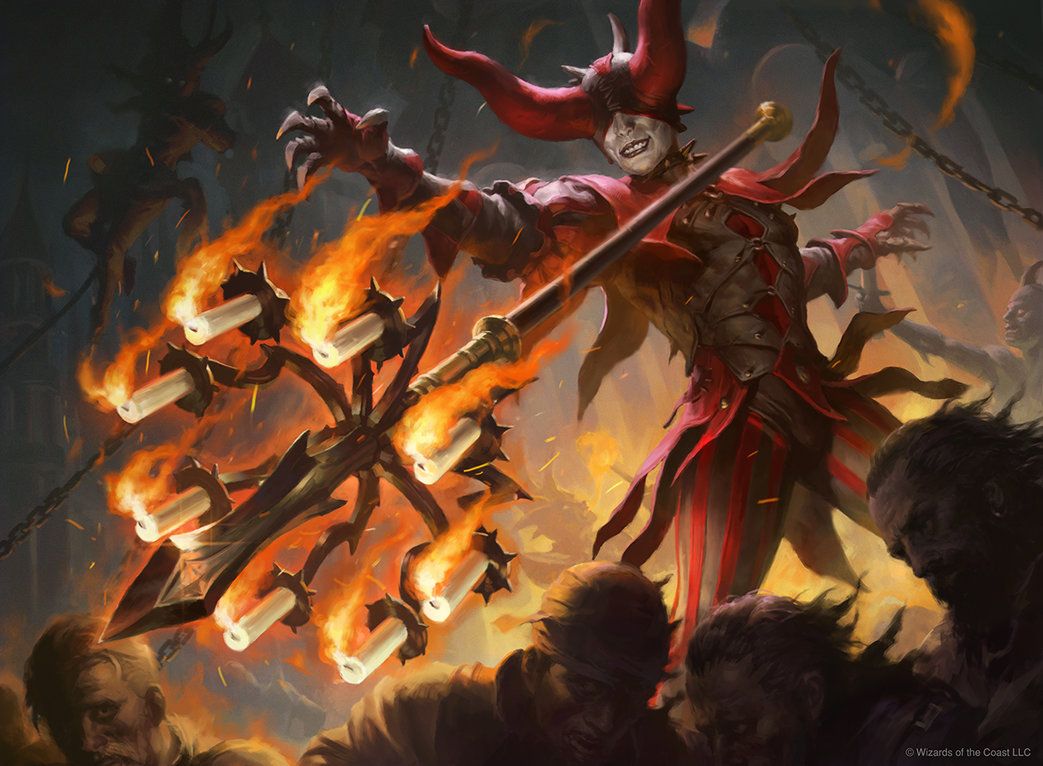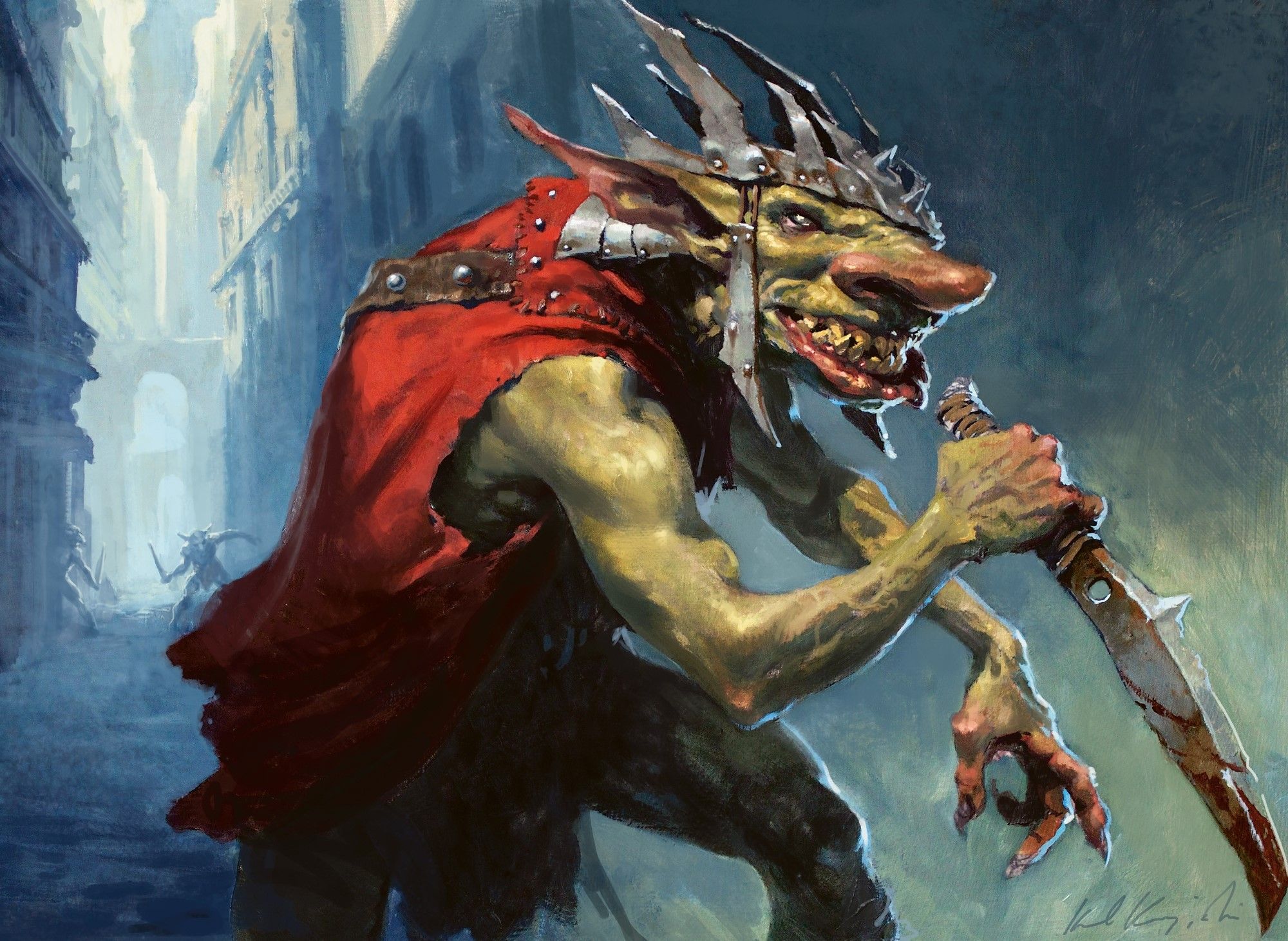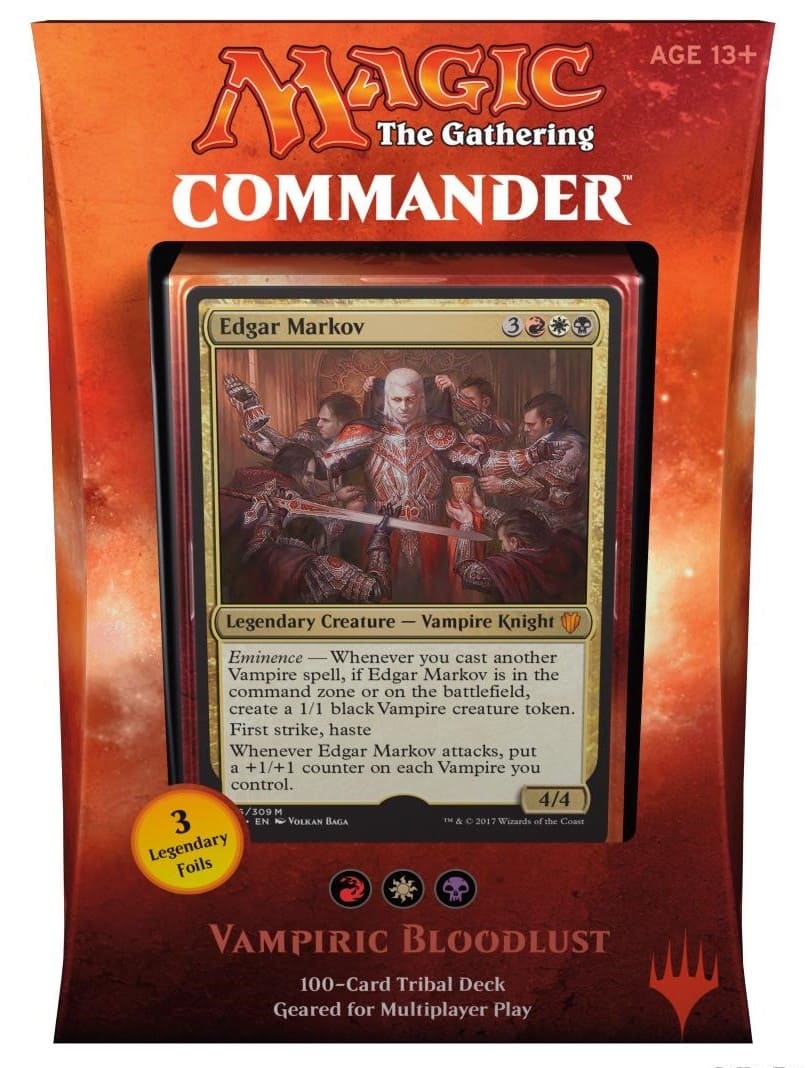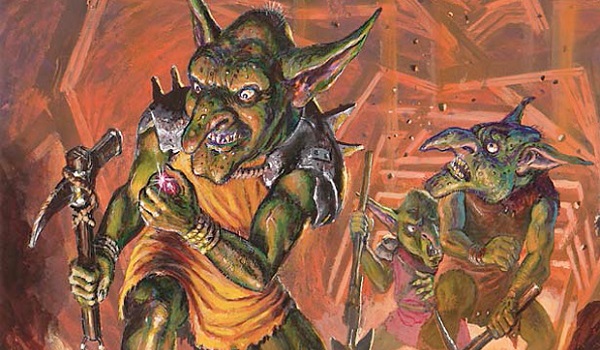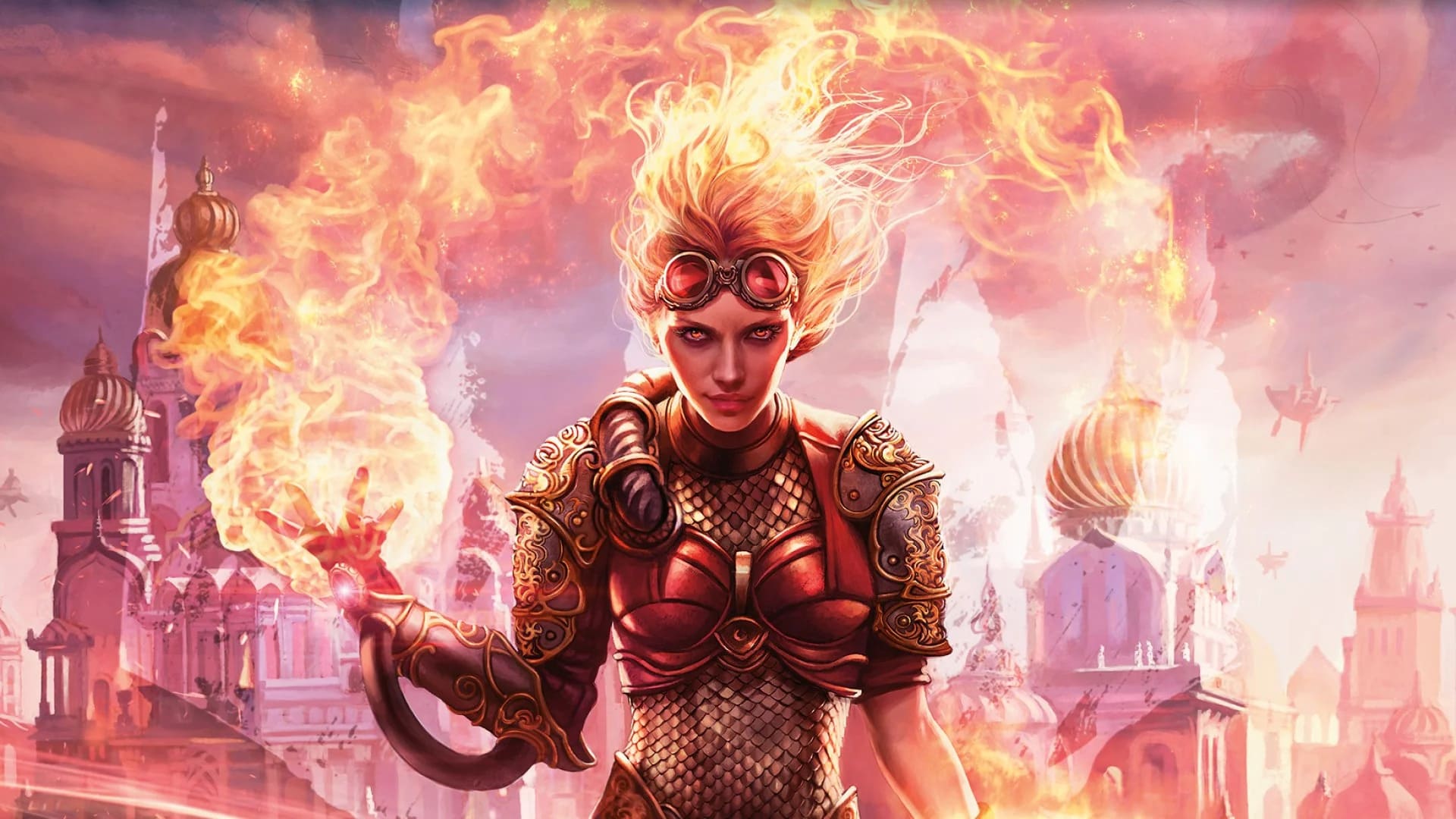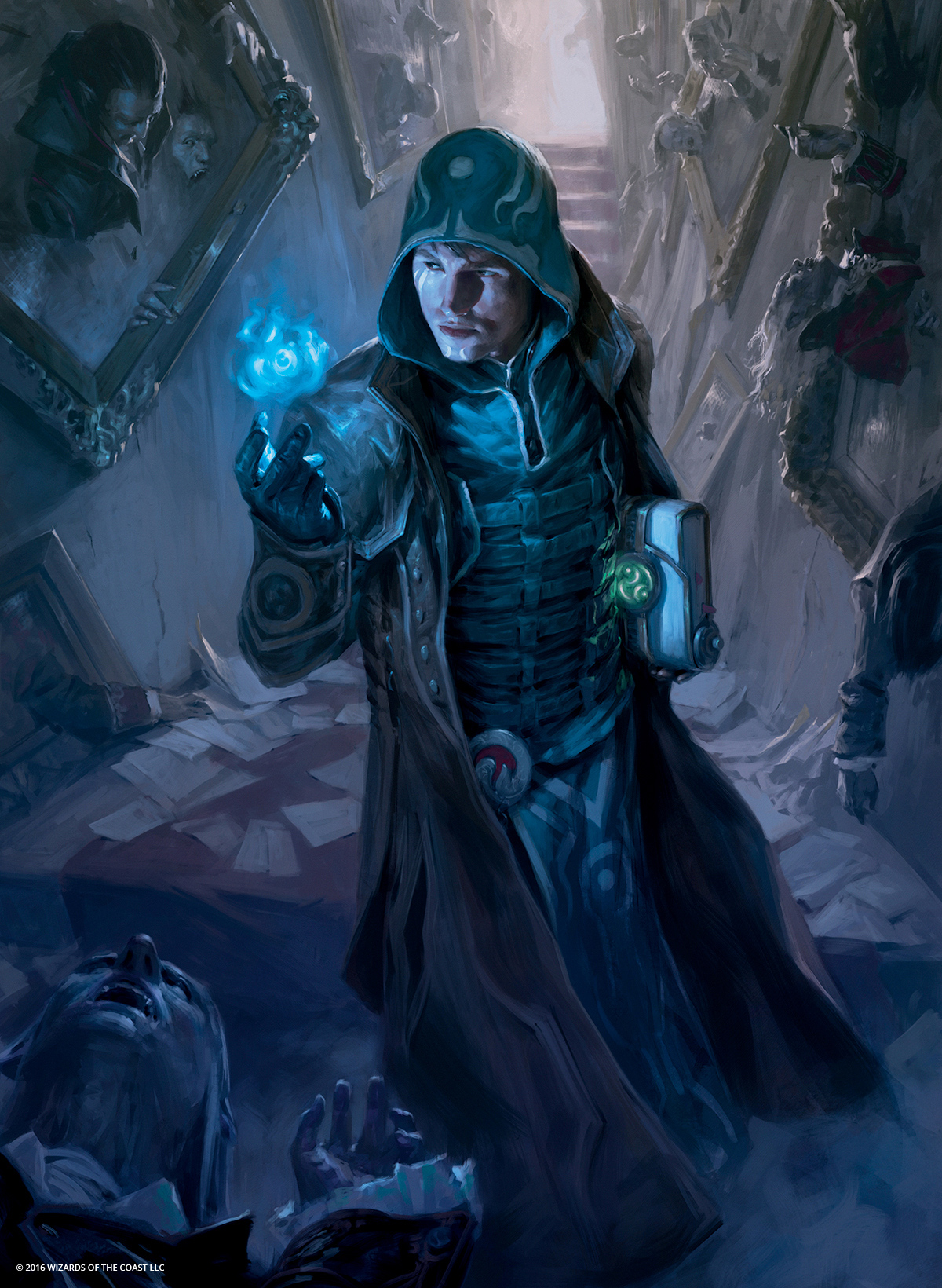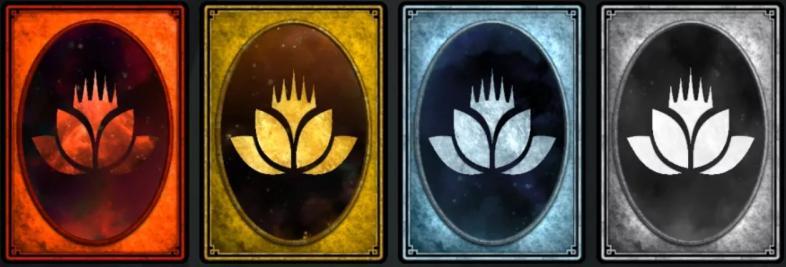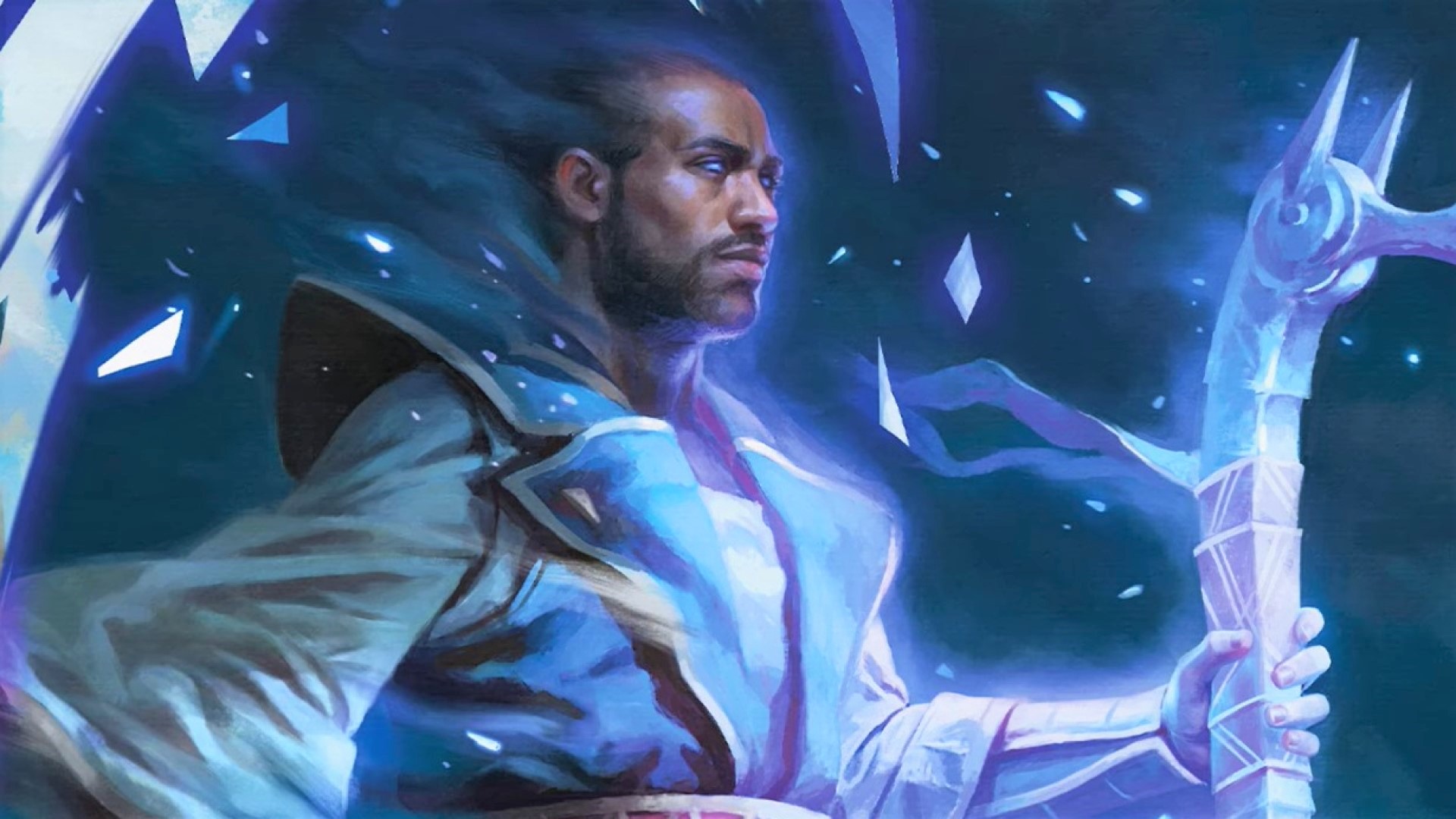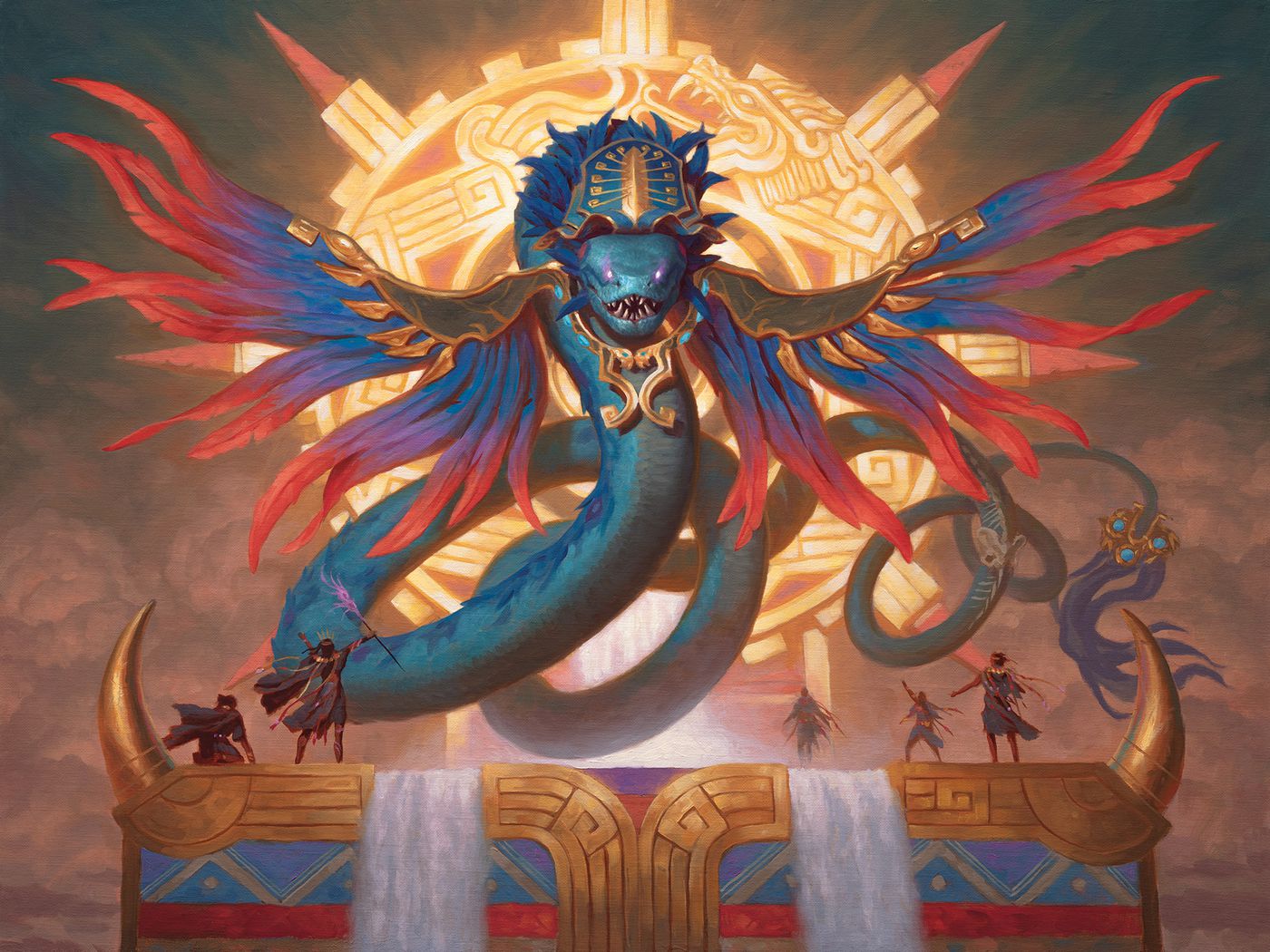
What's better than winning a game of Magic on Arena? Winning it quickly. Aggro decks have been a staple of the metagame since time immemorial, but not all fast decks are necessarily aggro. In recent years, cards have put midrange in a dangerous place, getting in underneath control strategies and outpacing their opponents. There are many good decks that you could build that would make you a terror on the ranked ladder. As a starting place to craft your own decks to take on the best current constructed decks, these are the best early decks for winning in MTG Arena.
1. Prismari Midrange

Winning on turn five isn't late-game. The format has slowed down considerably enough that turn five is a decently fast finish. Prismari midrange has one of the best representations on the standard meta, claiming almost a quarter of the winning decks in the format. The reason why it's such a powerful deck is that it's consistent and can deal with many challenges. It packs a punch with hasty creatures that it can easily back up. Cards like Saw It Coming and Negate give it great options for removal. Goldspan Dragon offers excellent resilience, and the fact that a single treasure can be used to cast a Negate blanks most targeted removal.
What's Good About This Deck
- It's a tempo deck, so it's very interactive.
- Your choices during the game can immensely impact your winning and losing with this deck.
- Great board-control package with Bonecrusher Giant and Frost Bite.
- Taking extra turns is always fun for everyone except your opponent.
How To Play This Deck Effectively
- Don't be afraid to foretell cards. It might seem like a waste of our second turn, but you'll be grateful for the cost reduction later on.
- Don't panic if you see your life-total taking a beating during the early part of the game. The deck doesn't start on top. It ends up there.
- Use Expressive Iteration to stick your land drops and give you card advantage. You can even play a land you exile with it, if you need to.
- Even if you don't have a valid target, using Boncrusher on your opponent is still a useful strategy. Remember to cast it on their turn.
- Don't forget that you get two mana for the price of one with a treasure and Goldspan Dragon on the field. Once you have a two-mana counterspell, you can essentially blank any targeted removal your opponent has.
Decklist:
- 4 Bonecrusher Giant
- 4 Brazen Borrower
- 2 Galazeth Prismari
- 4 Goldspan Dragon
- 3 Alrund's Epiphany
- 3 Expressive Iteration
- 2 Essence Scatter
- 2 Mystical Dispute
- 1 Negate
- 3 Saw It Coming
- 3 Mazemind Tome
- 4 Fabled Passage
- 3 Faceless Haven
- 4 Riverglide Pathway
- 6 Snow-Covered Island
- 4 Snow-Covered Mountain
- 4 Volatile Fjord
- 4 Frost Bite
Sideboard
- 1 Mazemind Tome
- 2 Cinderclasm
- 2 Disdainful Stroke
- 3 Redcap Melee
- 2 Scorching Dragonfire
- 1 Shadowspear
- 2 Shark Typhoon
- 2 The Akroan War
2. Mono-White Aggro

What's better than beating your opponent to death by turn four? Gaining life while you do so! Mono-white lifegain/aggro hasn't been around in the standard meta for a while. Even so, it's always been just on the fringes. In Ikoria standard, there was a sort of cat-tribal lifegain going on, but it never amounted to much. This time around, lifegain is a lot more consistent, and protection packages such as Alseid of Life's Bounty and Selfless Savior give the deck the legs it needs to finish the game. Lurrus of the Dream Den adds resilience against board wipes, allowing you to finish off ailing enemies efficiently.
What's Good About This Deck
- Lifegain ensures that you'll never die from being burned out of the game.
- It plays well against other aggro decks, thanks to its ability to recover life.
- Lurrus adds a level of redundancy that stops against board wipes.
- It's a very simple deck to learn how to play. Most turns, you want to be attacking with everything.
How To Play This Deck Effectively
- Use Alseid of Life's Bounty and Selfless Savior to keep your Luminarch Aspirant alive. The Aspirant helps to pump your creatures throughout the game.
- Selfless Savior is strictly better as a protector since it doesn't require the mana cost that Alseid does.
- Seasoned Hallowblade's ability doesn't stop it from being exiled. Be careful not to try to make it indestructible, or else you'll lose the Hallowblade and the card you discard.
- Maul of the Skyclaves is an excellent finisher against ground-based decks. Most of them can't handle a lifelinking flier with first strike.
- Your choice of a card with Elite Spellbinder is crucial to keeping your chances alive. However, even if it eats a counterspell, that's one less card in your opponent's hand to worry about.
Decklist:
- 4 Alseid of Life's Bounty
- 2 Drannith Magistrate
- 4 Elite Spellbinder
- 4 Giant Killer
- 2 Legion Angel
- 4 Luminarch Aspirant
- 3 Reidane, God of the Worthy
- 4 Seasoned Hallowblade
- 4 Selfless Savior
- 4 Skyclave Apparition
- 1 Maul of the Skyclaves
- 4 Faceless Haven
- 20 Snow-Covered Plains
Sideboard
- 2 Drannith Magistrate
- 2 Legion Angel
- 4 Glass Casket
- 2 Glorious Protector
- 1 Shadowspear
- 4 Usher of the Fallen
3. Mono-Red Aggro

Mono-red aggro has a place in Magic's storied history ever since the earliest tournaments. Whether it's goblins, satyrs, devils, or some combination of creatures, the deck has seen many successes, and this standard rotation is no exception. This iteration of Mono-red aggro hasn't picked up many tools from Strixhaven, but it's managed to stand up to new sets coming out consistently. Much of the list is made up of older cards, especially from Eldraine and Theros. Rotation is likely to hit this deck particularly hard since it'll lose most of the pieces that make it such a powerful choice.
What's Good About This Deck
- Fast aggro deck with low-to-the-ground hasty creatures.
- It's a simple deck to pilot and doesn't have much complexity to worry about.
- It can land damage through creature abilities and trample, allowing it to hit the opponent consistently every turn and chip away at their life-totals.
- It remains one of the scariest decks to face off against in Standard constructed play.
How To Play This Deck Effectively
- Swing early, swing often. Always try to chip away at your opponent's life.
- If you have a favorable attack but might lose the creature, attack anyway. Mono-red can rebuild its board easier than its opponents in most cases.
- Use Hall Monitor's activated ability to ensure that the opponent's most robust blocker is out of combat. This approach usually gives you much more favorable attacks.
- Remember that Embercleave can be flashed in during your attack step, AND it gets a cost reduction based on attacking creatures.
- If you have Anax, Hardened in the Forge on the field, he makes for the best target for your Embercleave. He’s also insurance against board wipes.
- Avoid attacking with Torbran if there isn’t a viable trade for you to make. You need to keep him alive to keep dishing out damage.
- Some of your creatures will die, but that's a sacrifice you should be willing to make for victory.
Decklist:
- 4 Fervent Champion
- 1 Fireblade Charger
- 19 Snow-Covered Mountain
- 4 Embercleave
- 4 Faceless Haven
- 3 Frost Bite
- 2 Torbran, Thane of Red Fell
- 1 Phoenix of Ash
- 4 Hall Monitor
- 4 Robber of the Rich
- 1 The Akroan War
- 4 Rimrock Knight
- 4 Bonecrusher Giant
- 4 Anax, Hardened in the Forge
- 1 Castle Embereth
Sideboard
- 2 Roiling Vortex
- 2 Ox of Agonas
- 3 Scorching Dragonfire
- 2 The Akroan War
- 4 Redcap Melee
- 1 Phoenix of Ash
- 1 Frost Bite
4. Dimir Rogues

Nobody who's played Standard over the last few months can avoid running into a Dimir Rogues pile. What makes this deck insidious is that it has multiple ways to prosecute a win. On the one hand, the flying, flash creatures make for evasive threats that worsen with the more cards you lose off the top of your library. Consistent mill tools also make for a dangerous complement to this deck. With so many cards in graveyards, it's easy to make your rogues into huge threats that are impossible or unfavorable to block. What's more, this deck is usually backed up by some nifty counterspells and targeted removal, making it almost impossible to overcome once it has the upper hand.
What's Good About This Deck
- The Rogues deck has resilience built into it due to its multiple-win-condition strategy.
- Evasive creatures make for consistent damage output.
- It requires guile and cunning to leave mana up to thwart the opponent's plans.
- Consistent card draw ensures that even if there's a blowout, the deck can quickly refuel.
How To Play This Deck Effectively
- Flash creatures should be played on your opponent's turn. Since they come in on the opponent's turn, they can attack on your next turn, effectively giving them haste.
- Use your flash creatures with payoffs like Thieves' Guild Enforcer. Casting an Enforcer with one already on the field makes them both trigger twice.
- If you can avoid it, never cast a spell on your own turn. This deck prefers to play everything on its opponent's turn while keeping mana up for counterspells and disruption.
- Keep an eye on your opponent's graveyard. Once their graveyard has passed eight cards, you have all the benefits you need to win the game.
- Lurrus of the Dream Den is a way for you to get your creatures back from the graveyard for added value.
- Don't forget that Fabled Passage triggers Ruin Crab twice - once when it first comes in and once when you fetch the land from it, even if the land comes in tapped.
Decklist:
Companion
- 1 Lurrus of the Dream-Den
- 4 Merfolk Windrobber
- 4 Ruin Crab
- 4 Soaring Thought-Thief
- 4 Thieves' Guild Enforcer
- 2 Agadeem's Awakening
- 3 Of One Mind
- 1 Didn't Say Please
- 1 Disdainful Stroke
- 4 Drown in the Loch
- 1 Eliminate
- 3 Heartless Act
- 4 Into the Story
- 1 Mystical Dispute
- 1 Castle Locthwain
- 4 Clearwater Pathway
- 4 Fabled Passage
- 6 Island
- 3 Swamp
- 3 Temple of Deceit
- 3 Zagoth Triome
- 1 Eliminate
- 1 Mystical Dispute
- 2 Cling to Dust
- 3 Crippling Fear
- 1 Dead Weight
- 1 Epic Downfall
- 1 Lurrus of the Dream-Den
- 3 Skyclave Shade
- 1 Soul-Guide Lantern
- 1 Test of Talents
5. Gruul Midrange

An underdog in the fast-deck category is Gruul Midrange. Despite the name, this deck can make some explosive plays that will leave the opponent in a lurch quicker than they expect. Using tools like Rimrock Knight and Lovestruck Beast to get down huge threats early, this deck can typically close out a game by turn-four or five. Hasty threats that ramp the deck further like Goldspan Dragon are an automatic inclusion. It can play the long game just as well, with The Great Henge giving the deck some added resilience with lifegain and card draw. All in all, it's surprising that we haven't seen this deck more often. It's very likely that post-rotation, this deck might be the one to beat.
What's Good About This Deck
- Huge threats in the early game make the deck a pain to deal with for smaller aggro decks.
- Getting massive threats on the field early and going wide can be difficult for control decks to get favorable board states.
- Ramp ensures that the deck never has to suffer for mana throughout the game.
- The life gain from The Great Henge can be a great benefit if the game goes long.
How To Play This Deck Effectively
- Get in lots of damage early. If you don't have anything to use with your Jaspera Sentinel, it's OK to attack with it and pump it with Rimrock knight.
- Henge is an excellent card to gain card advantage and pump your creatures.
- Embercleave might not be reduced by too much, but you don't need to reduce the cost that much to make a massive difference.
- Use Esika's Chariot to expand the board since it copies a token when you attack.
- Use Lovestruck Beast's token to get it to attack, but remember that Edgewall innkeeper can serve that purpose as well.
- Magda's ability sees herself, so you can use her to ramp up early, even if you may lose Magda in the process.
Decklist:
- 4 Goldspan Dragon
- 4 Bonecrusher Giant
- 4 Edgewall Innkeeper
- 4 Rimrock Knight
- 4 Lovestruck Beast
- 4 Magda, Brazen Outlaw
- 1 The Great Henge
- 1 Fabled Passage
- 4 Branchloft Pathway
- 4 Shatterskull Smashing
- 3 Mountain
- 3 Esika's Chariot
- 1 Kazandu Mammoth
- 3 Embercleave
- 5 Forest
- 4 Jaspera Sentinel
- 2 Needleverge Pathway
- 1 The Akroan War
- 4 Cragcrown Pathway
- 2 Scorching Dragonfire
- 1 Klothys, God of Destiny
- 1 Snakeskin Veil
- 1 Wilt
- 1 Redcap Melee
- 1 Scavenging Ooze
- 2 The Akroan War
- 1 Garruk, Unleashed
- 1 Masked Vandal
- 1 Elder Gargaroth
- 1 Soul Sear
- 2 Roiling Vortex
You may also be interested in:
- The 10 Best MTG: Arena Decks
- MTG Arena Guide, Tips and Tricks
- Best Ways to Get Wildcards in MTG Arena
- [Top 7] MTG Arena Best Artifact Decks That Wreck Hard!
- [TOP 5] MTG Arena Best Control Decks
- [Top 10] MTG Arena Best Historic Decks That Wreck Hard!
- MTG Arena Best Packs To Buy – A Guide for Beginners and Intermediate Players
- MTG Arena: Best Ways to Get Cards
- Top 15 Best MTG Arena Mythic Rares
- MTG Arena Ranking System Explained
- The Best Singleton Decks in MTG Arena
- [Top 5] Best MTG Arena Aggro Decks
- [Top 5] MTG Arena Best Angel Decks
- [Top 10] MTG Arena Best White Decks
- [Top 10] MTG Arena Best Black Decks

